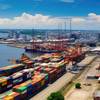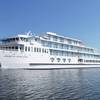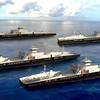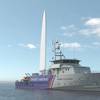DNV GL, Washington State Partner for Sustainable Maritime Growth
Washington State partnered with DNV GL in late 2017 to develop the “Washington Maritime Blue” strategy for the sustainable development of the state’s $38 billion maritime industry.
With that strategy now complete, the State unveils how it plans to achieve the vision of being home to a world-class, thriving, and sustainable maritime industry by 2050.
At an event in Seattle, Washington State Governor Jay Inslee’s Maritime Innovation Advisory Council unveiled the results of their year-long effort to develop a comprehensive strategy for leading the nation in the “blue” economy through clean technology and best practices. The Washington State Department of Commerce partnered with DNV GL, a leading classification society and a recognized advisor to the maritime industry, to develop the strategic roadmap that will be used to guide the state toward achieving this vision.
The roadmap and supporting strategy framework was driven by the Maritime Blue Task Force, comprised of hundreds of industry leaders and stakeholders from across public and private sectors. DNV GL and the Washington State Department of Commerce facilitated the stakeholder process and examined how other leading international maritime clusters have pursued similar sustainability and innovation-centric agendas. Drawing on these insights, stakeholders identified development pathways, policy recommendations and demonstration projects that will lead to achieving the Washington Maritime Blue vision.
The strategy roll-out
Anthony DSouza, Executive Vice President DNV GL Maritime Americas, gave a keynote address to attendees at the strategy roll-out event. DSouza spoke about the importance of fostering the growth of a sustainable “blue” economy and the opportunities that it yields, while emphasizing that collaboration between the traditional maritime industry, the tech sector, and stakeholders across the public and private sector through a cluster organization is crucial for success.
Members of the Maritime Blue Task Force provided an overview on several of the key demonstration projects identified in the strategy. Those include the state’s plan for decarbonization, electrification of Washington State Ferries, driving research & development to commercialization in maritime markets, digitalization and IT for maritime entrepreneurship, green gateway and port investments, as well as youth maritime programming, and tribal engagement in blue and rural economic development opportunities.
Positioning for the future
Washington Maritime Blue is the latest large-scale collaboration project for sustainable development that DNV GL has been involved in. The company’s engagements in other similar efforts, including Norway’s Green Coastal Shipping Program, the Sustainable Development Goals: Exploring Maritime Opportunities, and more, contributed to the global expertise that was shared with WA stakeholders.














